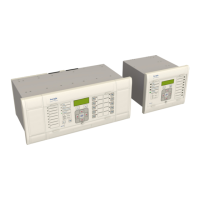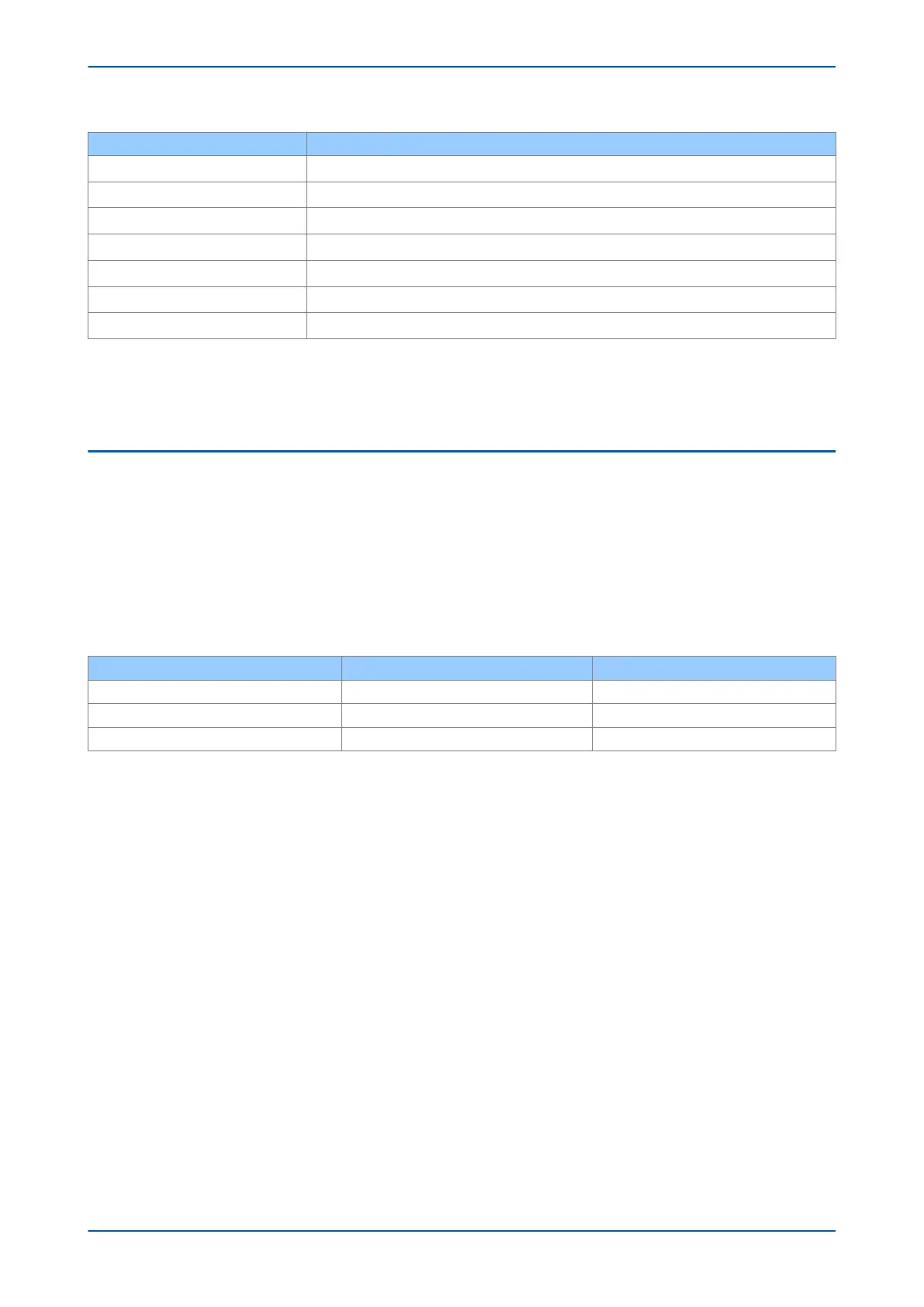Bit number I> Blocking function
Bit 1 VTS Blocks I>2
Bit 2 VTS Blocks I>3
Bit 3 VTS Blocks I>4
Bit 4 2H Blocks I>1
Bit 5 2H Blocks I>2
Bit 9 2H Blocks I>3
Bit 10 2H Blocks I>4
These can be set via the Front panel HMI or with the settings application software.
The Phase O
vercurrent threshold setting can be influenced by theVoltage Controlled Overcurrent functions, if this
functionality is available and used.
3.5 DIRECTIONAL ELEMENT
If fault current can flow in both directions through a protected location, you will need to use a directional
ov
ercurrent element to determine the direction of the fault. Once the direction has been determined the device
can decide whether to allow tripping or to block tripping. To determine the direction of a phase overcurrent fault,
the device must compare the phase angle of the fault current with that of a known reference quantity. The phase
angle of this known reference quantity must be independent of the faulted phase. Typically this will be the line
voltage between the other two phases.
The phase fault elements of the IEDs are internally polarized by the quadrature phase-phase voltages, as shown in
the table below:
Phase of protection Operate current Polarizing voltage
A Phase IA VBC
B Phase IB VCA
C Phase IC VAB
Under system fault conditions, the fault current vector lags its nominal phase voltage by an angle depending on
the system X/R ratio
. The IED must therefore operate with maximum sensitivity for currents lying in this region. This
is achieved by using the IED characteristic angle (RCA). This is the is the angle by which the current applied to the
IED must be displaced from the voltage applied to the IED to obtain maximum sensitivity.
The device provides a setting I> Char Angle, which is set globally for all overcurrent stages. It is possible to set
characteristic angles anywhere in the range –95° to +95°.
A directional check is performed based on the following criteria:
Directional forward
-90° < (angle(I) - angle(V) - RCA) < 90°
Directional reverse
-90° > (angle(I) - angle(V) - RCA) > 90°
3.5.1 IMPLEMENTING DIRECTIONALISATION
A directional element is available for all of the phase overcurrent stages in this device. These are found in the
dir
ection setting cells for the relevant stage (e.g. I>1 Direction, I>2 Direction). They can be set to non-directional,
directional forward, or directional reverse.
P64x Chapter 9 - Current Protection Functions
P64x-TM-EN-1.3 205

